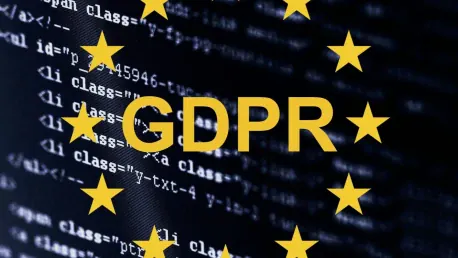

In September 2023, a significant incident occurred involving the accidental addition of a journalist, Jeffrey Goldberg, editor-in-chief of The Atlantic, to a Signal chat group where senior U.S. government officials were discussing sensitive battle plans, including the March 15 bombings in Yemen.

The European Union has introduced significant legislative measures that are essential in today's digital age, aiming at enhancing cybersecurity across diverse sectors. These laws are meticulously designed to focus on robust monitoring preparedness and enhanced cybersecurity governance, offering a

In the fast-evolving world of cybersecurity, the strategic movements of key personnel can significantly influence a company's trajectory and market position. The recent transition of Shabeel Shah from SentinelOne to Obsidian Security as the senior director of partner sales for the Asia Pacific

The startling revelation that OpenAI's ChatGPT falsely accused a Norwegian man, Arve Hjalmar Holmen, of murder has led to a significant outcry and legal repercussions. This incident has prompted Austrian non-profit organization noyb to file a formal complaint against OpenAI for violating GDPR

Choosing the right cloud backup service is crucial for businesses looking to protect their data. With many options available, finding a solution that balances ease of use, security, and affordability can be challenging. CrashPlan Endpoints claims to offer an ideal solution for small to medium-sized

Enterprises experience a surge in AI adoption, driven by technological advancements and increasing cybersecurity threats, according to the latest Zscaler report. In a recent report, it was revealed that enterprises have seen a substantial increase in the use of artificial intelligence (AI) and

In a concerning development for cybersecurity, Arctic Wolf has issued a critical warning regarding ongoing malicious activities targeting management interfaces of FortiGate firewall devices exposed to the public internet. The attacks, which reportedly started in early December of last year, have

The investigation into cybersecurity threats has unveiled a disturbing scheme orchestrated by the Chinese espionage group UNC3886. Utilizing expired Juniper MX routers, these cyber spies have transformed outdated network devices into surveillance hubs, compromising critical infrastructure sectors

As the pace of technological advancement accelerates, the U.S. Army has recognized the pressing need to modernize its network infrastructure, thereby unveiling the Unified Network Plan 2.0. This new iteration not only builds upon the foundational version released in 2021 but also integrates

In 2024, cybercriminals have become increasingly innovative, leveraging more sophisticated techniques to infiltrate corporate networks and evade security measures. Among these malicious actors, the Akira ransomware group stood out, responsible for approximately 15% of the cybersecurity incidents
ITCurated uses cookies to personalize your experience on our website. By continuing to use this site, you agree to our Cookie Policy